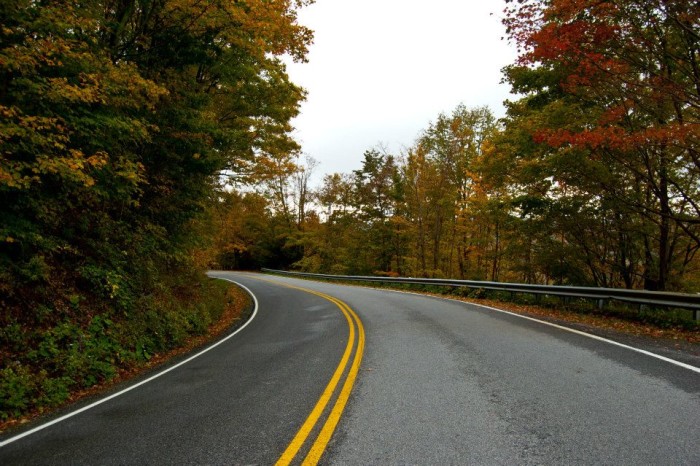Mabie, West Virginia
There is more to the town of Mabie than meets the eye. But what the eye sees in the small West Virginia valley town is rolling hills and an abundance of antiquity because this town was settled before the Civil War. Mabie lies nine miles west of Beverly or eight miles east of Coalton on the historic Staunton-Parkersburg Turnpike.
The town at one time was able to support a theatre, YMCA, a kindergarten through eighth grade schoolhouse, hotel and funeral home. Now only 50 people reside within the Mabie town limits. “I can remember going to see a radio show,” Mabie native Edna Shockey said, noting that although she doesn’t remember what the show was, she remembers the parlor that was used for radio shows and movies. But that wasn’t all the Mabie Theatre had to offer. “All of the seats were around the back and the front of the room was used for dances,” Mabie resident since 1942 Daisy Currence said. Prior to being the Mabie Theatre, the building was used as a funeral parlor, an interesting transition.
During the Roosevelt era, there was a community center type of building where families could come and play games . Although neither Currence or Shockey visited the Mabie YMCA, both have heard in years past that one existed. According to Currence the building burnt down after a church group built a fire in the building’s fireplace and began preparations for a Christmas program. Currence did state that no one was hurt in the fire.
Long before there was a YMCA, Mabie was established for its fertile soil. The farm-turned-industry town has roots that go deeper than the state of West Virginia. According to the West Virginia Division of Culture and History archives online, www.wvculture.org, Mabie was established originally under the name Roaring Creek which runs through the town. It was first settled in 1786, seventy-seven years before West Virginia became the 35th state in the Union. The first settlers in Mabie were three families; Westfall, Woods, and Rev. John Rowan.
Currence’s late husband, George Currence, is a descendance of Rev. John Rowan. According to Currence, the story in the Currence family claims that the original Rowan descendant lost his claim on the land that he settled in Mabie when a traveler found out that Rowan had never filed a claim on his homestead. “My husband’s relative was a Rowan and he and his family had built here, but he didn’t file a claim because the courthouse was all the way in Richmond,” she said. “So someone else went to Richmond and made a claim on the settlement. When he returned from Virginia he came to my husband’s family and just told them, ‘your out’.” Currence said the original Rowan then picked up and moved to Beverly, presumably filing his new claim this time.
In the early days of Mabie, the pioneering families had to cross over what became known as the Rowan-Westfall trail to Wilson Fort, located on Wilson Creek, to obtain groceries and have their milling done. According to an early clipping of the Randolph Enterprise, Col. Ben Wilson built Wilson’s Fort and settlement in 1772 at the mouth of Wilson’s Creek, which flows into Chenoweth Creek near the Elkins-Randolph County Airport. As time went on, more families began to move into the town of Mabie which at that point was called Fisher. The families of Ben Kittle, Moses Phillips, and John Bevin settled along the first road in Mabie called “old State Road”. The road is located near the historic Staunton-Parkersburg Turnpike, which was built in 1840 and is still the main route through the town.
Later, a group of families from Maryland and east of the Blue Ride Mountains also made an exodus into Mabie. The Crane, Hillary, and Whitecotton families moved into Mabie for farming opportunities. However, lumber and timber men were soon to catch wind of Mabie for its trees that were often 6 and 7 feet in diameter. With that being said, many of the original settlers in Mabie were farmers, but timber and coal mining were also major industries in Mabie.
1897, W.H. Mabie opened a band mill and the name took. According to Shockey, “Everyone went to Mabie to see about a job.” However, what is now known as Mabie is actually “New” Mabie. The original Mabie, referred to as “Old Mabie”, lies down a privately owned dirt road beside the post office, Mabie Post Master Robert Fields said. Fields has worked at the Mabie post office for 28 years, and although he lives in Elkins, Fields knows a thing or two about what comes and goes in Mabie. “What was originally Mabie is now just a farm field,” he said. And unfortunately something that isn’t coming to Mabie is economic growth. “The community, like most of the state, is not growing,” Fields said. “This is mostly farmland and people are not willing to part with it.”
According to Fields, 80 percent of the working residents in Mabie are employed by coal mines elsewhere in the state. The remaining 20 percent is made up of teachers and Walmart employees. Currence and Shockey agreed that there is very little work in the small town of Mabie, but that hasn’t stopped new residents from coming and building homes. The seclusion and ruralness of the area has enticed them to call Mabie home.
Article Credit, 2015: Leah Dietz, Staff Writer for The Intermountain
